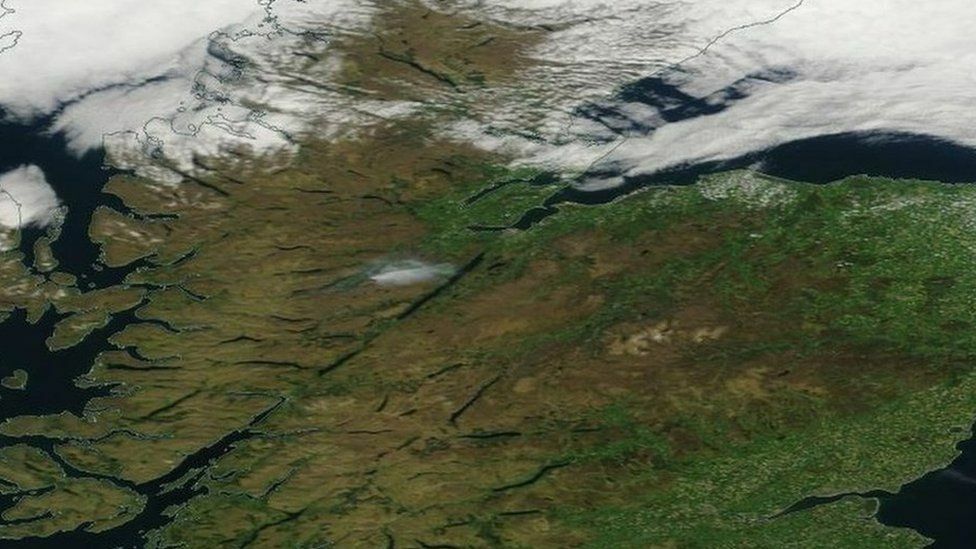Highlands wildfire, potentially UK’s largest, brought under control

A wildfire, potentially the largest in UK history, has been brought under control by firefighters near Cannich in the Highlands. The Scottish Fire and Rescue Service (SFRS) reported that the fire had spread across an 80sq km area of scrub and woodland. Since last week, the area has been affected by four separate fires, with crews battling the flames since Sunday. NASA satellites detected a 20km plume of smoke from the most recent incident. The exact scale of the wildfire will be confirmed through further analysis, including satellite data.
The challenging terrain, along with warm, dry, and windy weather, has made it difficult for the dozens of firefighters working to extinguish the blaze. Two firefighters sustained injuries after their all-terrain vehicle overturned at the scene, but have since been released from hospital. The cause of the accident is under investigation. Firefighters from across the Highlands, deer stalkers, and waterbombing helicopters have all been involved in tackling the flames.
SFRS group commander Jamie Thrower stated that the fire had affected an area approximately 8km long and 10km wide. He said, “We have got control of the fire and have the fire surrounded. Helicopters have been a useful tool for that and we have stopped the fire from spreading, but the weather is still causing a challenge.”
Dr Thomas Smith, an associate professor in environmental geography at the London School of Economics, explained that satellite data from the past 20 years would help confirm the scale of the wildfire and whether it is the largest recorded. He is currently awaiting the latest satellite information to make calculations.
Before the Cannich incident, the largest wildfire in the UK affected 53sq km of peatland in Sutherland’s Flow Country in May 2019. The second-largest occurred in April of this year at Glenuig in Lochaber, involving around 35sq km. Forestry and Land Scotland (FLS) believes the wildfire is linked to wild camping. SFRS has urged people to exercise caution around campfires and when disposing of cigarettes.
Energy company SSEN Transmission has been monitoring the fire due to the presence of electricity towers in the area. However, there has been no damage or threat to the disruption of electricity supply. A spokeswoman for the company said, “Our engineers have been on site and inspected the overhead powerline where it crosses through the affected area to safely assess for any impact as a result of the wildfire. We’ll continue to monitor the area to ensure the line remains in safe operation, and liaise with fire and rescue services as required.”
RSPB Scotland reported that the fire had spread to the Corrimony Nature Reserve, damaging birch woodland and heather moorland. Reserve manager Simon McLaughlin said that ground-nesting birds’ activities have been severely impacted, and some species, including frogs, have perished in the fire. Trees planted to regenerate native woodland, some by local schoolchildren, have also been destroyed.
Forestry and Land Scotland states that the majority of wildfires are caused by accidents, as people often underestimate how quickly a campfire ember or dropped cigarette can develop into a wildfire in dry vegetation or woodland. Wildfires can release significant amounts of carbon. A WWF Scotland study estimated that the May 2019 wildfire in Sutherland’s Flow Country released 700,000 tonnes of greenhouse gases into the atmosphere.
The Scottish Greens highlighted that the Highland region alone recorded around 360 wildfires between 2017 and 2022. Greens MSP Ariane Burgess said, “My thoughts are first of all with the two firefighters who have been injured.” She added, “The Highlands are on the front line of the climate crisis, make no mistake. Our habitats and our land use, our size and geography, and our place as the jewel in Scotland’s natural crown means what we do here is of vital importance.”
Latest Thailand News
Follow The Thaiger on Google News:


























